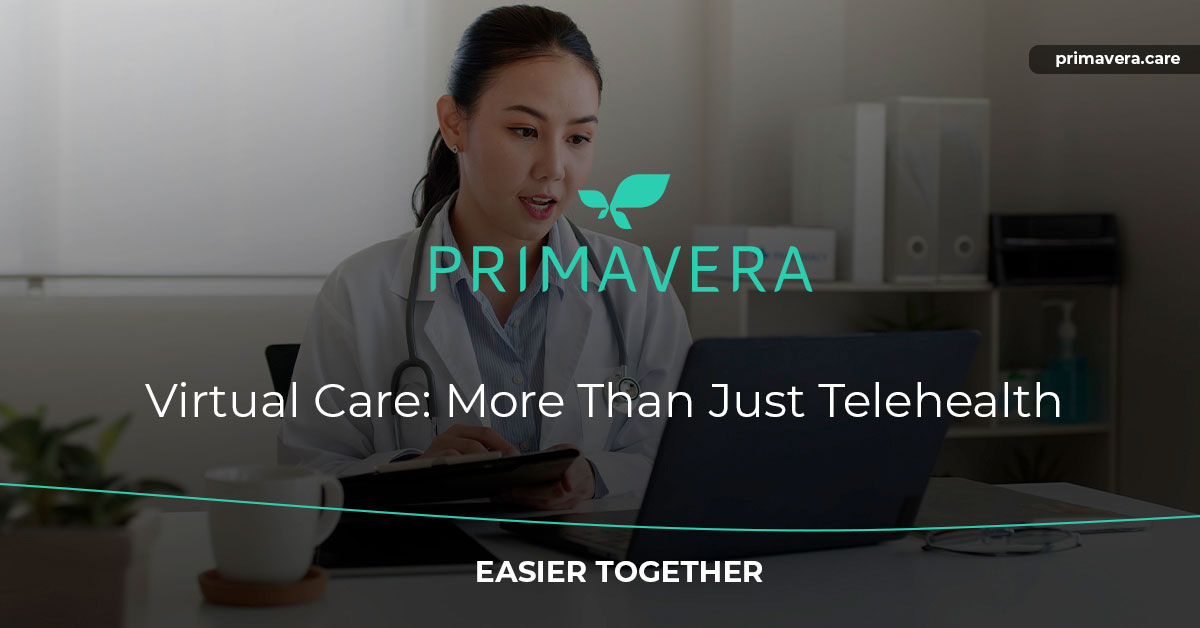Telehealth solutions are software solutions. They help manage patient’s, data, and allow for scheduling, delegation, and administration. In many minds, this is where the definition of telehealth stops; but this service is more than a tool – it is a platform for communication and for engaging with your patients on a human level.
The goal is to extend care beyond the physical limits of a brick and mortar facility, adding virtual care – without compromising care quality.
Barriers to Care
Healthcare has had to adapt over the last few years – and it will need to continue to evolve now that new technologies are being integrated. Healthcare providers have had to be creative and rethink how they can provide the best care given realistic hurdles. In the spirit of growth, there are two main barriers to care we want to bring up:
Cost of Care
Quality care costs money – both for practitioners and for patients. From operational costs to testing; staffing, and maintenance, the hidden and everyday costs of healthcare facilities can be mitigated by virtual solutions. Telehealth is instrumental in reducing those costs for both providers and care recipients.
Industry analysis of telehealth solutions by Cigna, shows that telehealth not only reduces in-person healthcare visit costs by “$93 for non-urgent needs, but a specialist visit via telehealth was $120 less than an in-person visit, and a virtual urgent care appointment was $141 less than going to an urgent care clinic.”
Additionally, telehealth solutions “omit the need for unnecessary (mandatory) lab testing “which led to an average savings of $118 per episode of care.”
Access to Care
Access to care rolls right into our point regarding cost, since financial flexibility for patients is definitely an incarnation of accessibility – but so are transportation, education, and healthcare provider options. Telehealth by its nature is connective – and is constantly growing in it’s inclusivity and offerings for healthcare plans.
Internally, telehealth platforms make it easy to schedule transportation, host virtual calls and appointments, schedule follow-ups, and provide self-care and educational materials, etc. Solutions like Primavera begin addressing accessibility with the technology itself:
- No App is required to be downloaded by patients – this is particularly great for geriatric populations, or those with other mobility or cognitive pathologies. Care can be reached with the single touch of a button.
- Virtual visits are supported with high resolution video, easy to access invites, and tools available in multiple languages.
For providers, accessibility of technology is also mission-critical:
- Enjoy built-in schedulers
- Intuitive dashboards supported by up-to-date analytics
- Seamless integration into your software suite
- And support of multiple participants
Consider This
Managing your patients by population or diagnosis helps to manage remote health offerings, therapies, and protocols. Organization with the help of telehealth helps to bring these strategies to your patients in the form of easier access.
If your patients have better accessibility they will provide you with greater amounts of data which will help build your analytics and power real-time risk assessment features based on patient information.
Security is Accessibility
The more popular telehealth solutions (and remote tools in general no matter your sector) become, the more prevalent security will be. If you platform is not secure it is not safely accessible to you or your patients so look for a platform that supports:
- Remote monitoring options for all integrated devices
- Audit logs
- SSL encryption
- Is HIPAA compliant
Assessing Risk
Once you’ve bolstered your security, you can safely go about assessing, managing, and actioning risk to improve your care continuum and streamline the resources for your practitioners.
We mentioned real-time risk assessment earlier, let’s dive a bit deeper.
Real-time data allows you to get a view of the top utilizers of your platform, determine which are at high risk, and track progress in comparison to established industry benchmarks. With Primavera, real-time data is auto populated to support risk stratification, and to help detect outliers (not just highest utilizers).
You also can also track by pharmacy usage and other metrics to determine high risk cases in an non-static environment, meaning that the data is always updating and adjusting your view accordingly.
Building Engagement
Prioritizing patient outcomes through your software with tools like risk management and coordinating care via scheduling and connectivity are just a few of the ways that telehealth helps elevate the care cycle without increasing the cost.
Building engagements through software is something that is becoming an integrated aspect of our daily lives already, from our social meetups to our day-to-day work environments. Extending that ease of access to our healthcare is a critical part of a quality telehealth solution.
Yes, telehealth is important in our current times with notable health obstacles and the need for remote access – but this cannot be the only purpose your solution serves. We are all humans after all, and healthcare is easier together.
Want to learn more about what telemedicine can do for you? Schedule your demo with us today.








Recent Comments